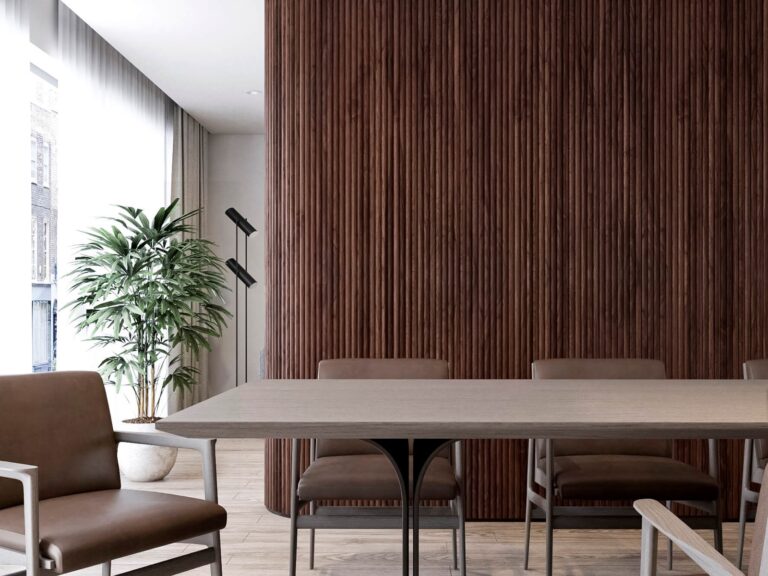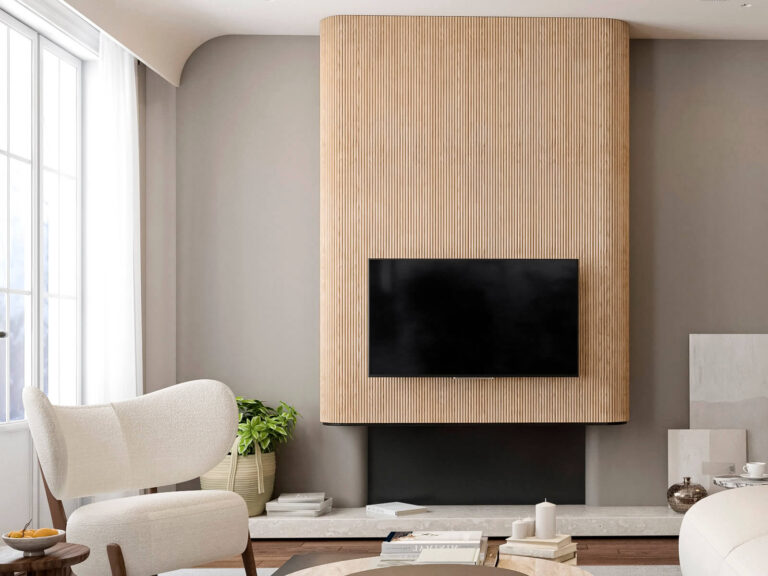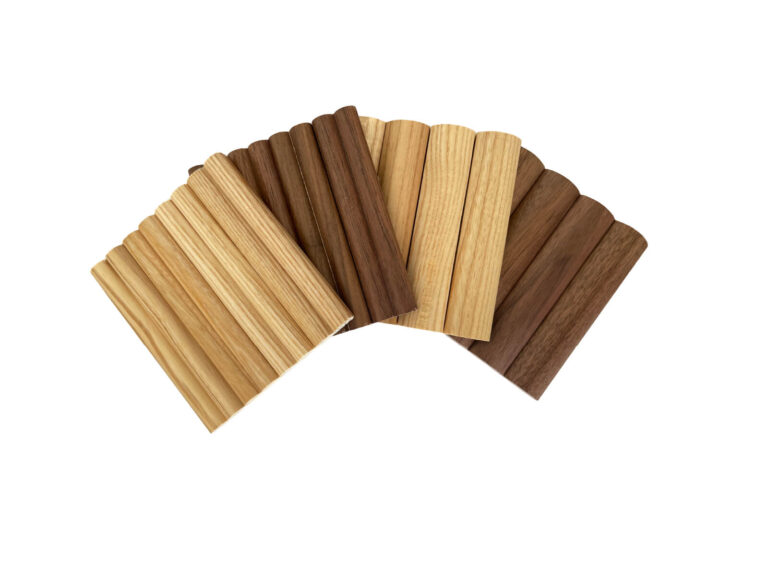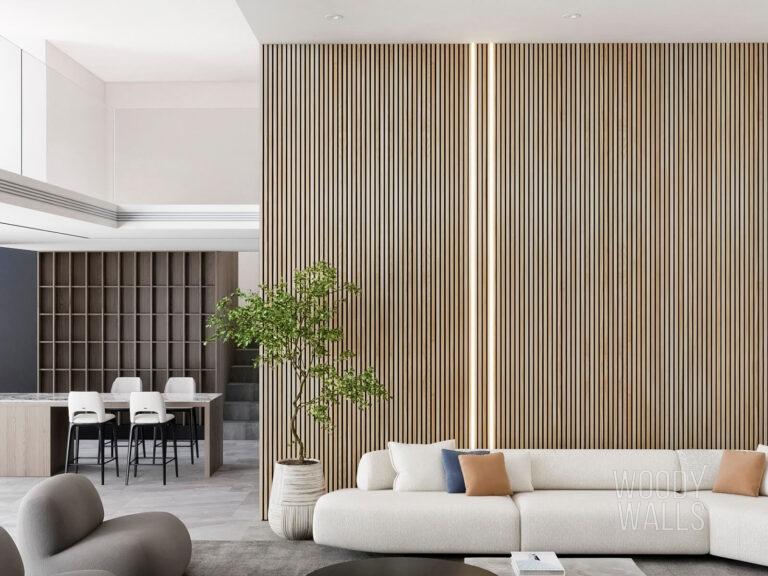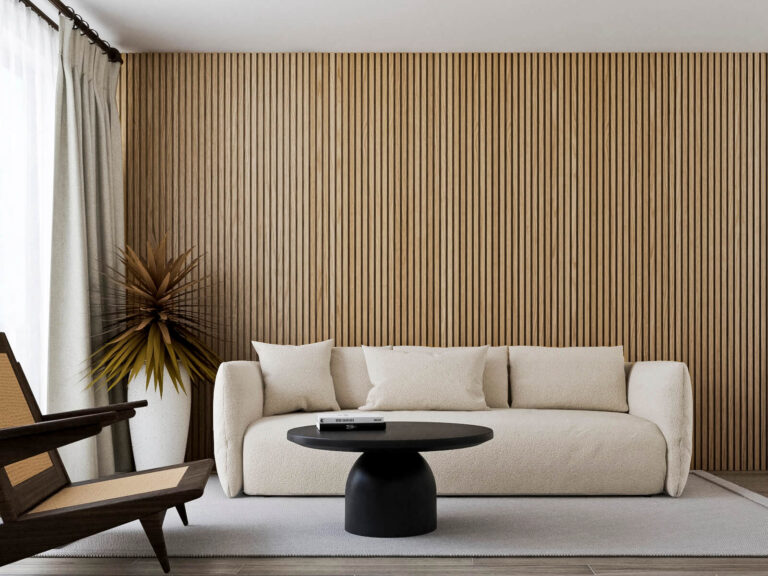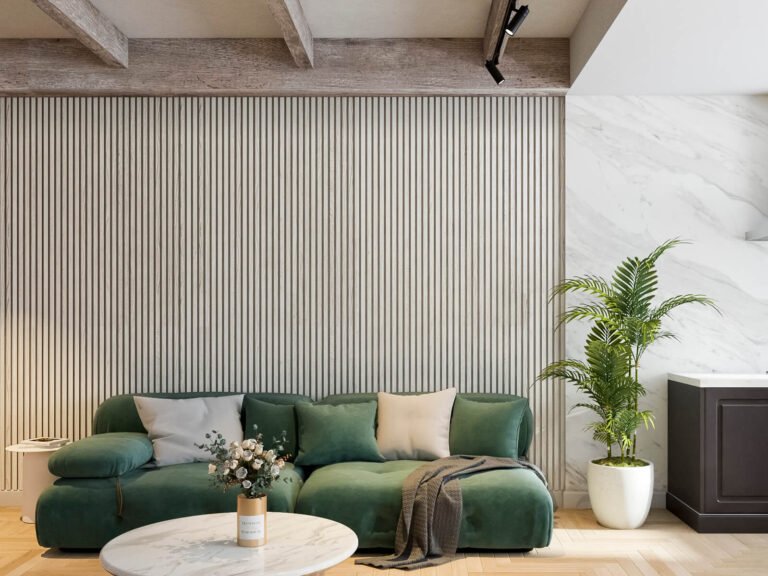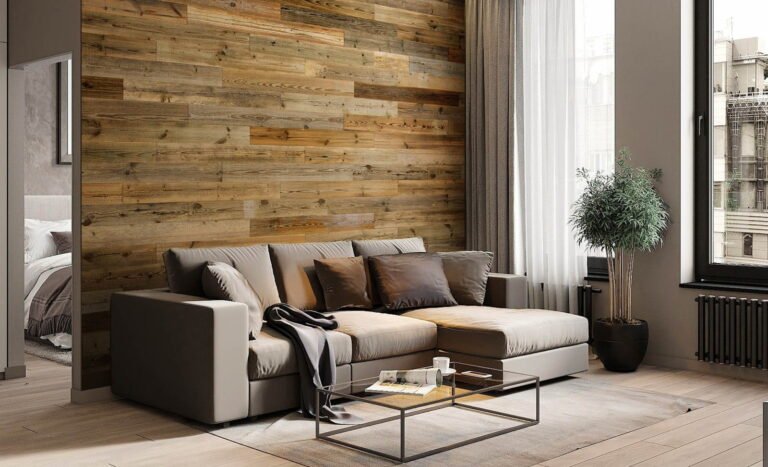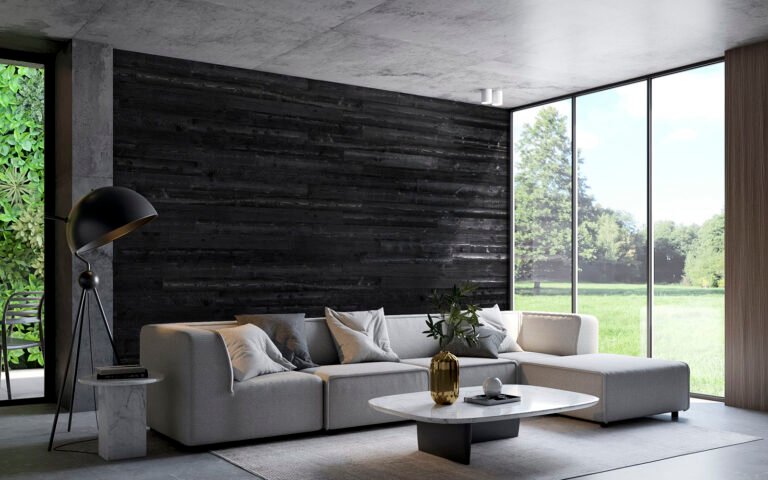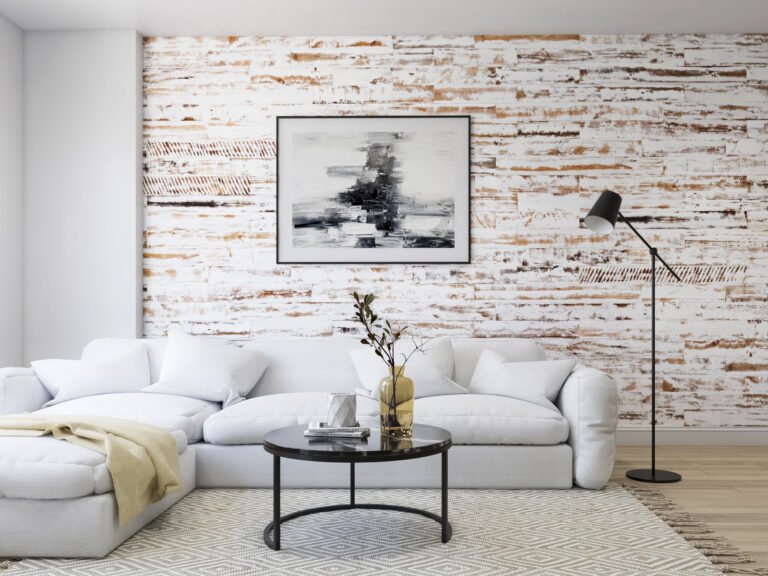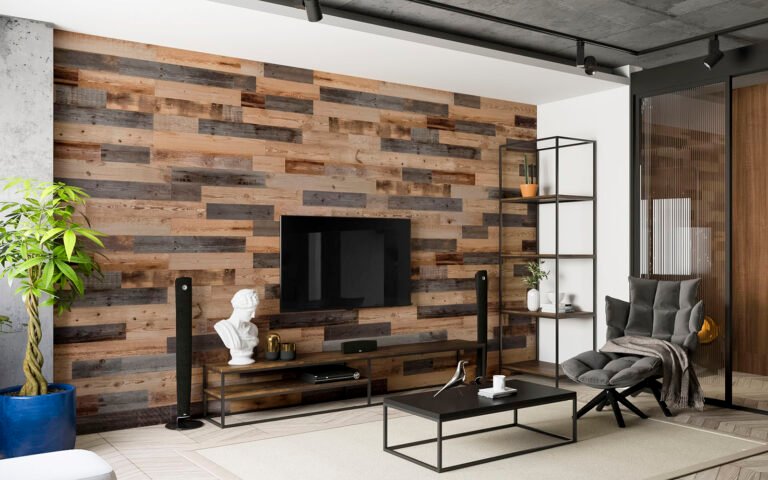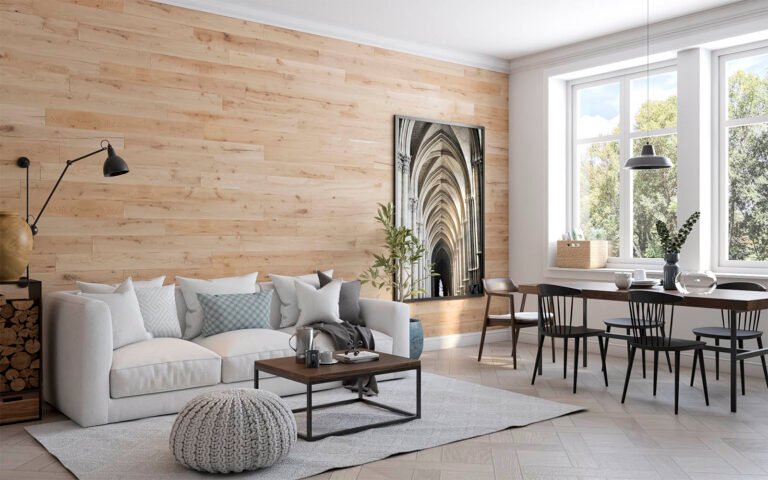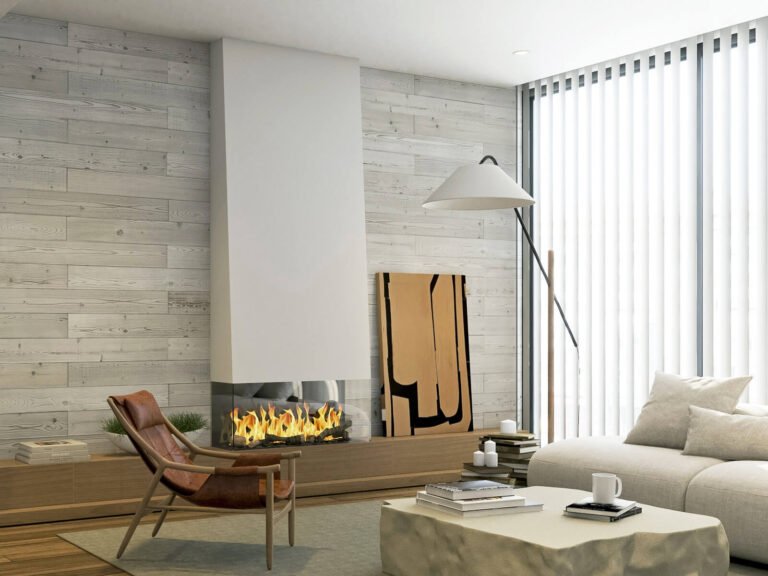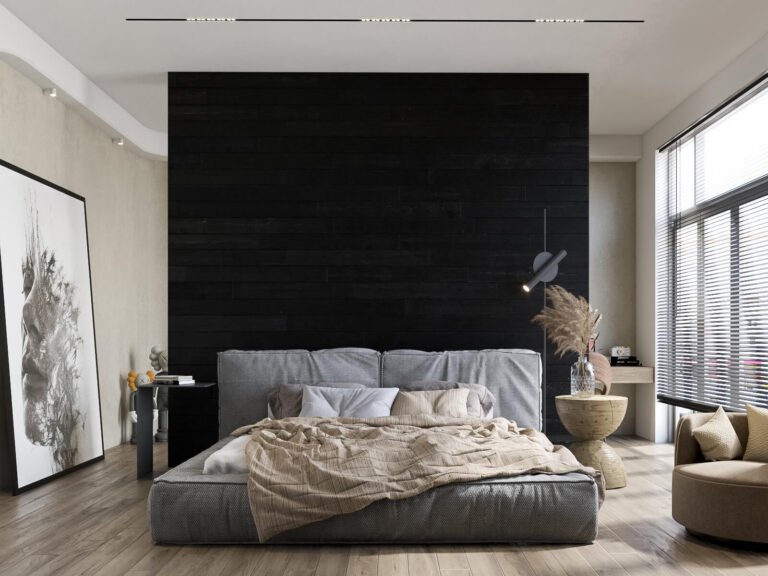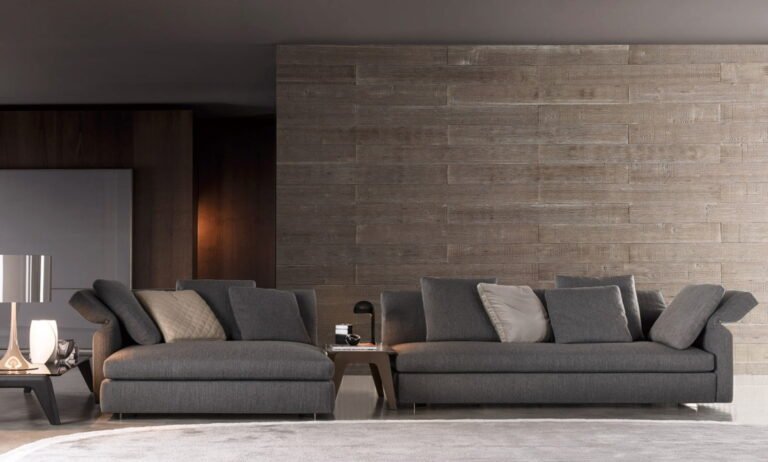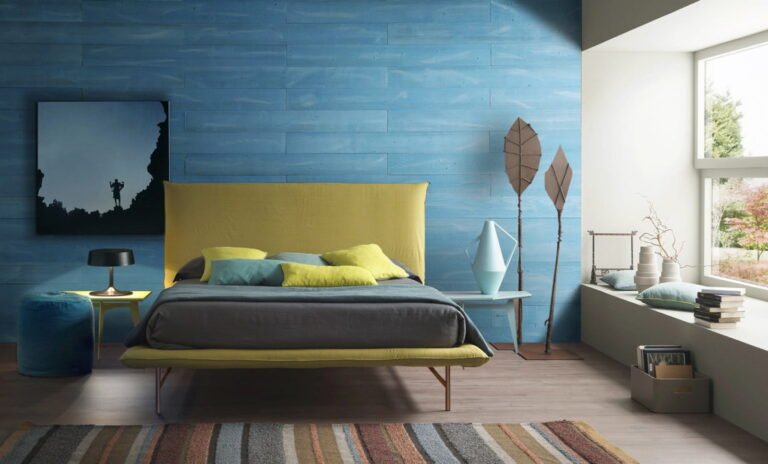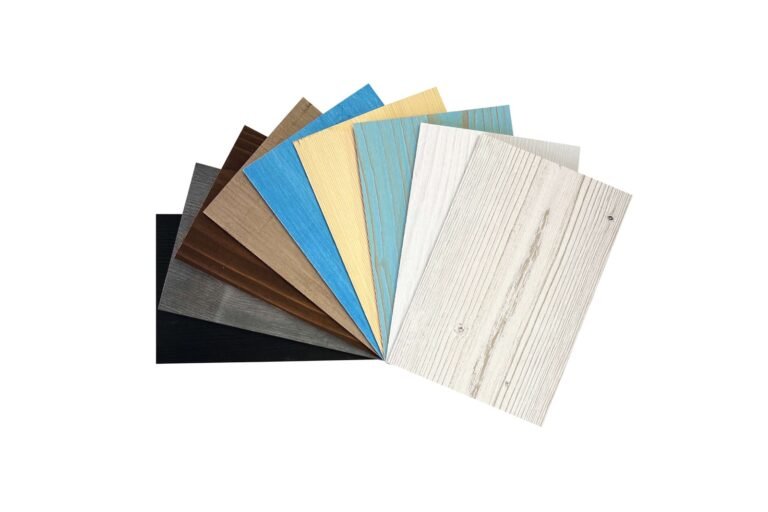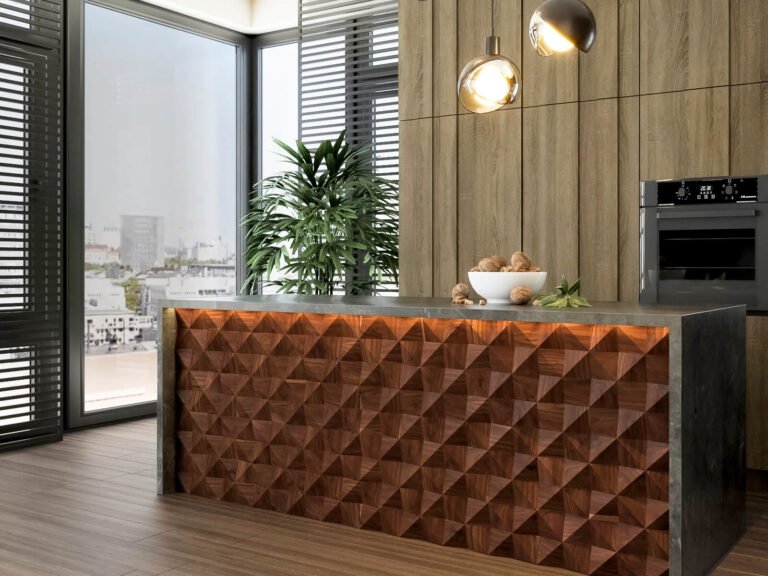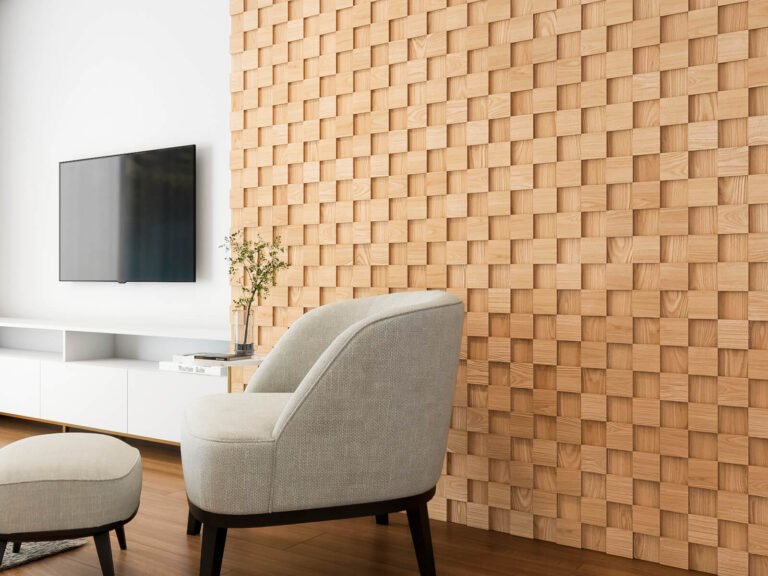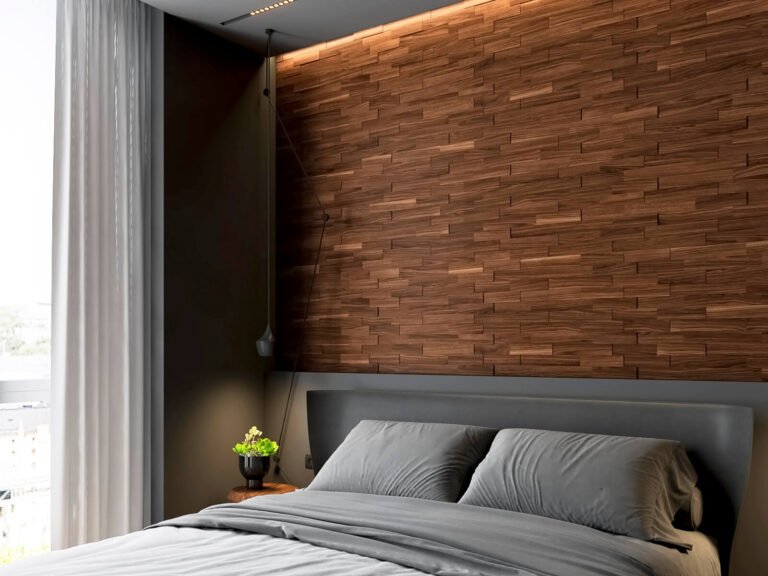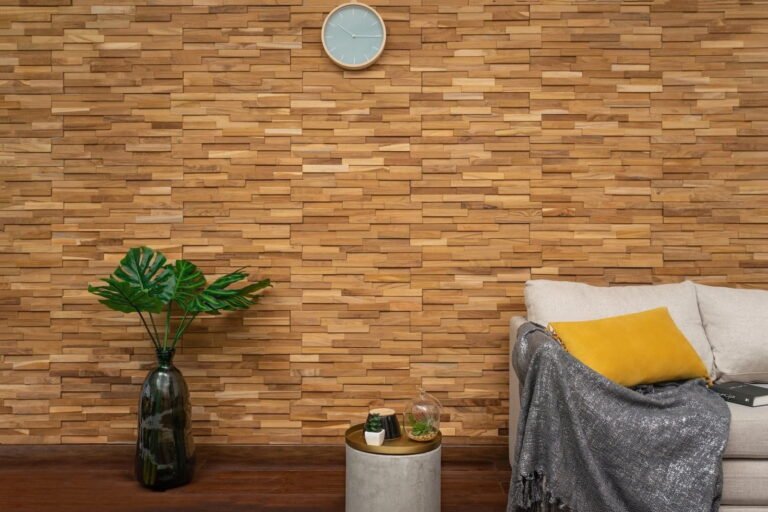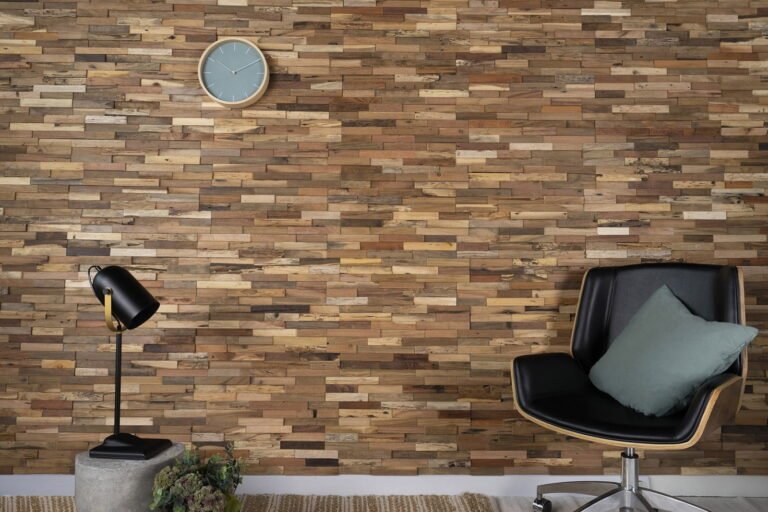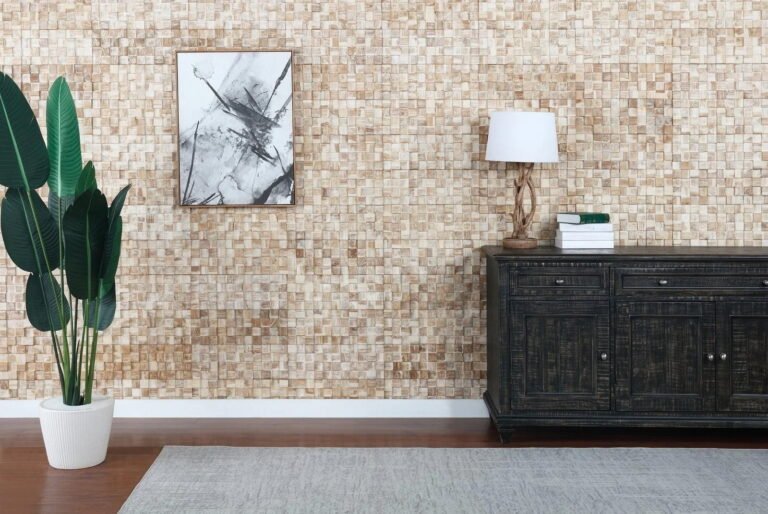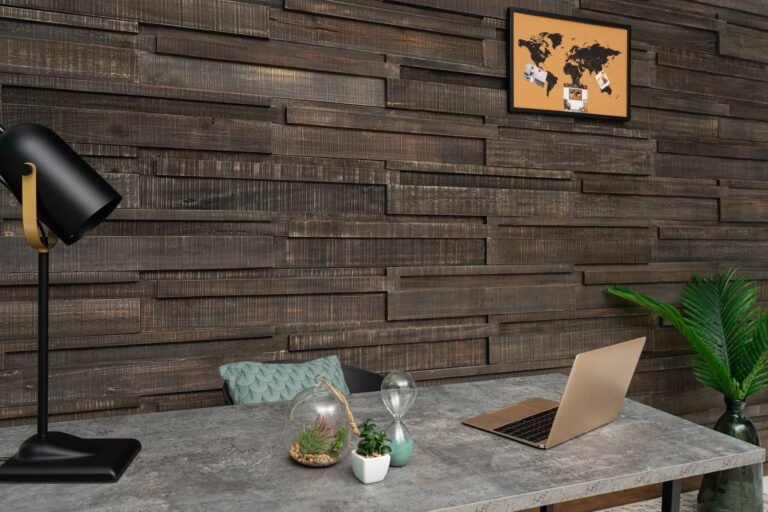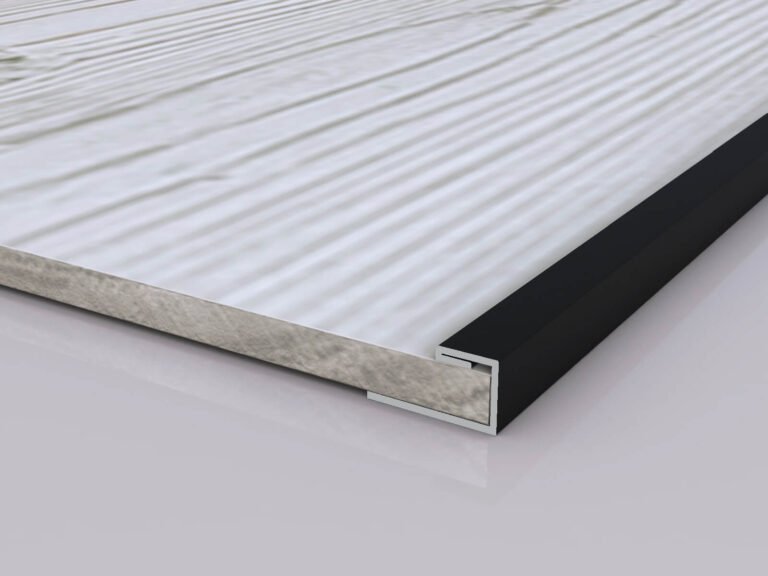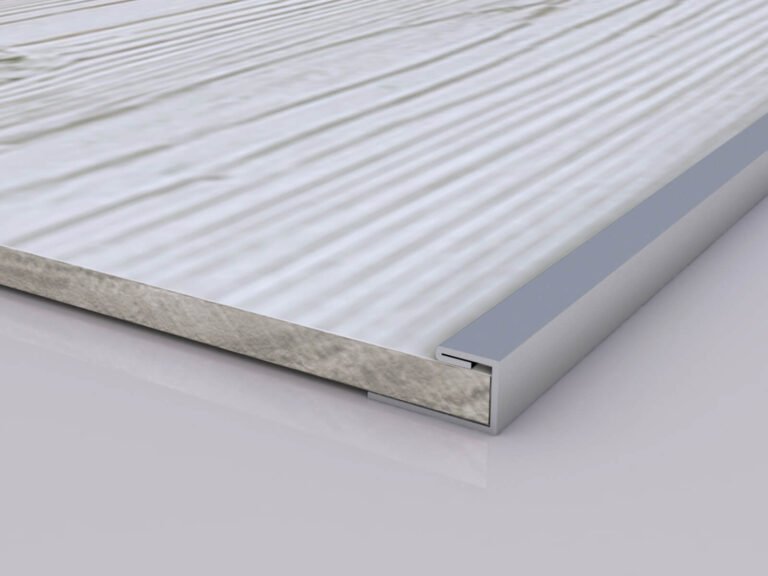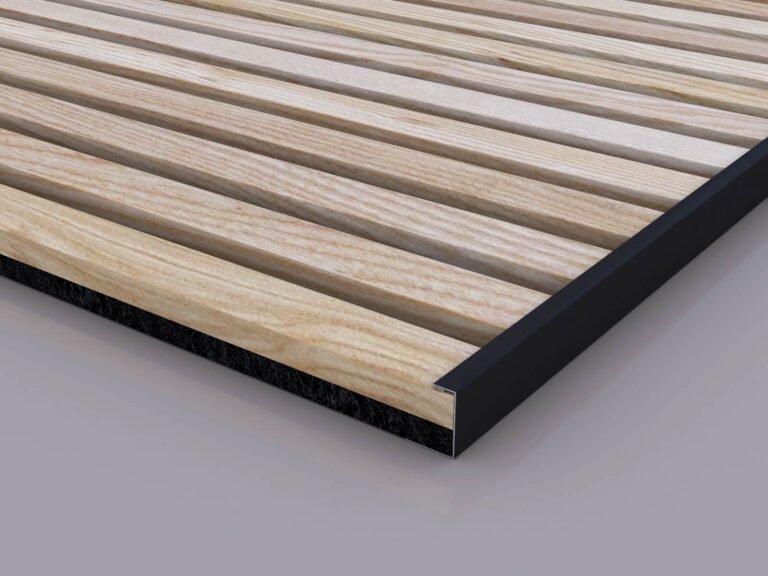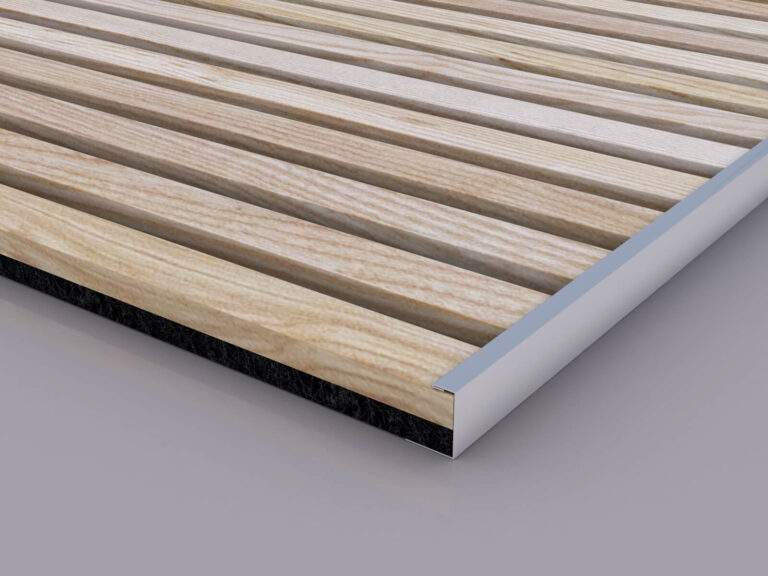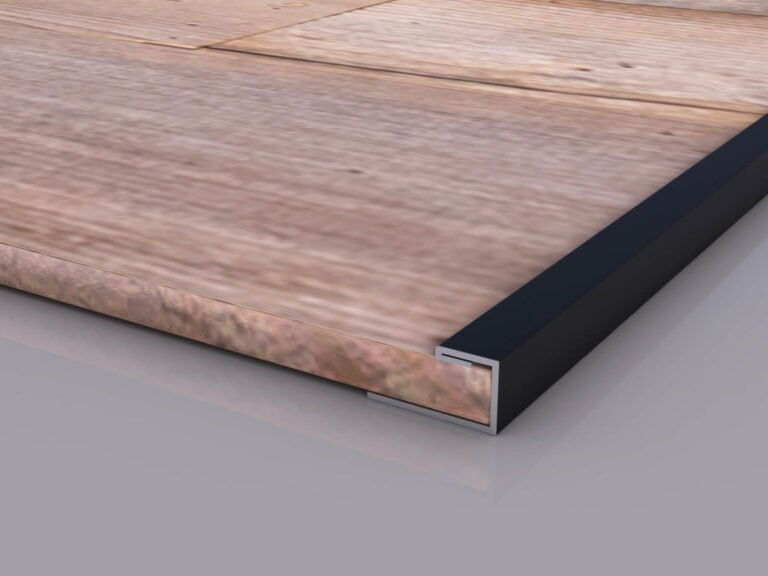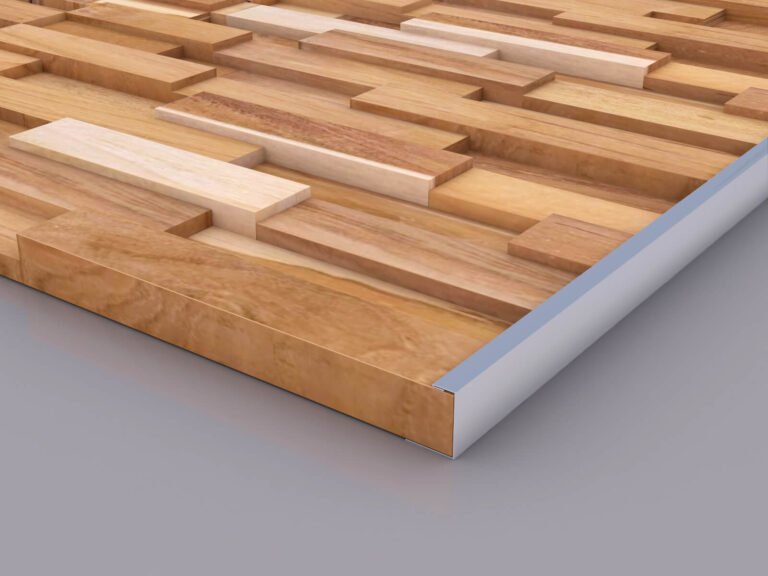Car siding features a tongue-and-groove design that lends a rustic appearance, while shiplap constructs with overlapping boards are popular for a more modern, clean-lined look. This article explores the differences between car siding vs shiplap in appearance, durability, and more. Let's check it out!
What is Car Siding?
Car siding is a type of wood paneling with V-shaped grooves. It was first used to line the interiors of boxcars in the mid-19th century. Because of its intended use, car siding is known by different names, such as railcar siding, V-groove, and boxcar siding.
Unlike other types of tongue-and-groove, car siding has one more groove down the center of each board. Hence, the boards look narrower while their width is the same. This unique design gives walls a distinct look and maintains the structural benefits of wider boards.

Car siding has a unique design
What is Shiplap?
Shiplap consists of wood boards that overlap at the edges, creating a tight seal. This design is durable and gives the interiors a cleaner appearance.
In the past, shiplap was made from pine and cedar. These days, there are more variations, such as fiber cement or vinyl. The variety of materials and unique designs make shiplap popular in interior designs, especially for walls.

Differences between Car Siding vs Shiplap
Both car siding and shiplap are wood paneling options that can add character to your home. This side-by-side comparison table helps you tell the differences between the two options:
| Car Siding | Shiplap | |
|---|---|---|
| Joint Design | A tongue-and-groove system | A joint that allows boards to overlap |
| Appearance | Rustic style with subtle grooves between boards | Modern look with horizontal lines |
| Installation | Requires careful alignment | Easier and faster |
| Use Cases | Ideal for warm, rustic interiors, cabins, and ceilings | Ideal for accent walls |
| Durability | More stable and less prone to warping | Allows for slight expansion |
| Cost | Higher | More budget-friendly |
Joint Design
Each board in car siding features a protruding tongue that fits snugly into a groove in the board next to it. Hence, the two boards can fit together snugly. A shiplap, on the other hand, has a rubber joint. Since the boards overlap somewhat, there’s a narrow gap between them.
Appearance
Both have stunning and dynamic looks but come with a different style. Car siding, with its narrow grooves, matches rustic designs. Shiplap offers a cleaner look with horizontal lines, making it a favorite choice in modern interiors.
Installation
Each board in car siding must fit each other perfectly to form a tight seal. This process is time-consuming and requires careful measurement. In contrast, the overlapping edges in the shiplap naturally align. If you need a DIY-friendly option, consider the shiplap.
Use Cases
Car siding is common in traditional settings, such as cabins. The strong structure makes it a popular choice for ceilings as well. Meanwhile, shiplap is known for interior accent walls, especially in modern designs. The clean lines in the shiplap contribute to a sleek appearance.
Durability
When comparing car siding vs. shiplap in terms of durability, the former wins. The tongue-and-groove system in car siding makes it firm and durable, so you do not have to worry about any warping over time. In contrast, the boards of the overlapping shiplap can expand, so they are more flexible. But you need to properly maintain it to keep the gaps uniform.
Cost
Car siding is more expensive because of the precise fitting and installation requirements. Shiplap costs less due to the wide boards and ease of installation. Yet, you should consider long-term savings. Car siding, despite the higher upfront cost, requires fewer repairs.
Car Siding vs Shiplap: Which Should You Choose?
The right choice between shiplap and car siding depends on your aesthetic taste and functional needs. Let's see when to choose which!

When to Choose Car Siding?
Car siding makes a seamless, tongue-and-groove design for excellent durability and insulation. So, it is ideal to create a cozy vibe in spaces like:
- Cabins and rustic interiors: Car siding has narrow grooves, adding charm and warmth to the cabins. Its robust construction and deep texture cultivate a homey feel, which is perfect for rustic styles.
- Ceilings: Tongue-and-groove construction makes for a tight fit. You use it to hide the blemishes on the ceilings.
- Areas that need extra durability: Car siding has an interlocking design that prevents warping. This design makes it advantageous in areas that experience temperature fluctuations.
When to Choose Shiplap
Shiplap has a rabbet joint design, allowing for easy installation and stylish aesthetics. You can then enjoy the flexibility and a timeless appeal. Shiplap works best in these cases:
- Modern walls: The horizontal lines of shiplap give your space a sleek look. Its subtle texture acts as visual interest without overwhelming the space.
- Accent walls in living rooms and bedrooms: Shiplap turns a plain wall into a spotlight. You can paint or stain the shiplap to evoke your favorite vibe.
Make the Right Choice with WoodyWalls
When comparing car siding vs. shiplap, you can consider their durability, design, and cost. These differences allow you to utilize each for particular use cases. Your choice will depend on your design plan, budget, and installation choices.
Looking for high-quality wood products? WoodyWalls has a premium selection of wood wall panels to help you achieve the look you want for your home.
FAQs
1. Can you use shiplap for siding?
Yes. Shiplap is a great option for exterior siding. The rabbet joints in the boards offer protection against external elements.
2. What is another name for car siding?
Some other names of car siding are railcar siding, V-groove, and boxcar siding.
3. Should I paint or stain my car siding?
Staining will last longer in the long run. Whereas paint may chip or peel, stain seeps into the wood. In this manner, you can get protected but keep looking fabulous.




